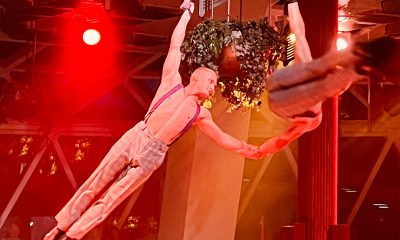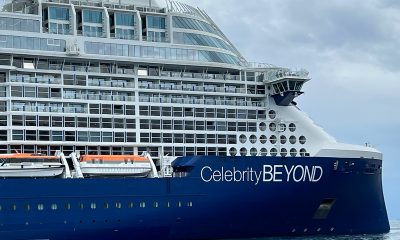Opinions
Celebrity BEYOND transatlantic cruise: final musings
Corporate PR decline request for interview with captain
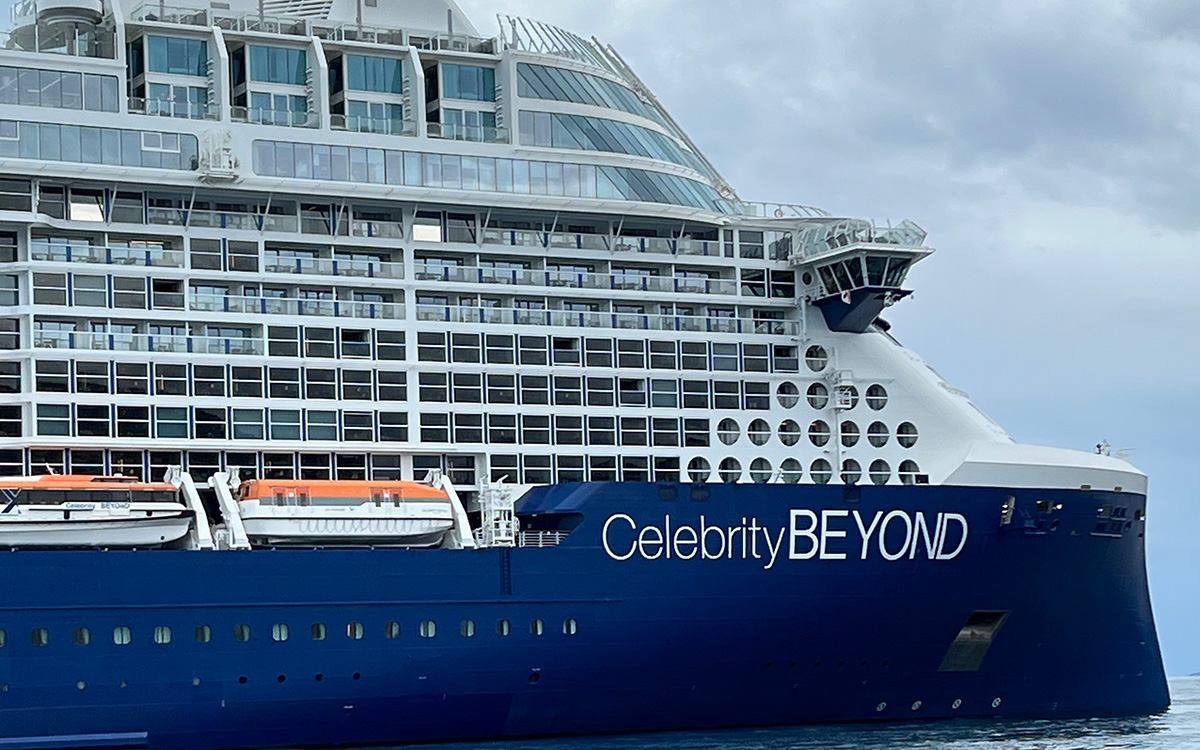
So there is no misunderstanding about this post: I had a great 14-day cruise on the Celebrity BEYOND. A beautiful ship, with great officers, crew, and entertainers. I am booked on two more Celebrity cruises at this time. The Flora to the Galapagos in February, and the ASCENT transatlantic from Barcelona, next October. I also look forward to booking two more cruises in 2025. I drafted this column a few hours after leaving the ship while sitting at the airport waiting for my flight to D.C.
We were welcomed to board the beautiful Beyond at the port of Civitavecchia, Italy, at 11 a.m. on Oct. 30. We dropped our luggage off as directed and then went through the metal detectors. Many of our group had reservations in the Retreat and were shown to a separate area to be boarded. After a short wait, when I was told there was an issue, I found out they just wanted to welcome me as a journalist they knew would be cruising with them and blogging from the ship. Then they directed us to the gangway to board. We were told our luggage would be delivered shortly. Turns out, many of us, including those in the Iconic suites, were still waiting for some luggage at 6:00pm. Mildly annoying, just not the welcome you want. On the other hand, my cabin was ready, and the attendant gave me a great smile, and welcomed me to the ship. I told him I needed hypoallergenic bedding and he had it there, and changed the bedding, within 15 minutes. I am on my own in the cabin and he didn’t have all that much to do for the two weeks, but was always available, and always smiling.
I was then left to my own devices and headed out to tour the ship. It is beautiful. I have been on other Celebrity ships including the EDGE, and did transatlantic cruises on the APEX the last two years. The BEYOND has some wonderful new additions. The Sunset Bar, designed by Nate Berkus, is beautiful; bigger, with plenty of seating. The retreat lounge has been expanded and changed in some good ways. Over the two weeks I was incredibly impressed with the concierge staff, Dalton was great, and with deck 17. The added space, designed in a great way, was perfect for relaxing, whether you wanted shade, or sun. The little pool was nice, and the bar and restaurant tables still great. Towels and blankets plentiful, with an always attentive crew. The garden deck was great with the plunge pool and the big pool deck was wonderful. The new hot tubs got lots of business.
Celebrity PR knows I write and publish a blog during my cruises, and for the past few years have written columns about Celebrity with the knowledge and help of their PR team. I have produced lots of sales for them, based on my published blogs, and columns. Despite that each year they make it difficult to get interviews with the captain and crew, which have always been well received. In the past though difficult, it was always possible. This year it wasn’t. When I asked to do interviews, I was told it would not be possible with the ridiculous statement, “At this time, we are keeping our stories focused on the product and overall travel experience.” Well, anyone who cruises will tell you the captain, officers, and crew, are what make a huge difference in the ‘overall travel experience.’ On the Beyond they were all around the ship chatting with cruisers, so not allowing an interview seemed really questionable. I know Celebrity is ‘LGBTQ+ friendly,’ I have written about that. I wondered if the fact that I would publish the interviews in the largest LGBTQ paper, among other outlets, was something they didn’t want done even though that would make no sense. Whatever the reason, it made no sense. Celebrity promotes and writes about their captains in press releases, using them as lures for travelers. The first woman captain, the first brothers being co-captains. I have actually written stories about them. But there is nothing like doing an interview and finding out why a captain or officer chose this career, a little more about them as people, and their families, and why they chose Celebrity. It would seem getting those stories out is good for the cruise line. Again, dealing with Celebrity PR is one of the most frustrating things a writer can do.
Dealing with the officers once on the ship is great. I arranged a meeting with Hotel Director Christophe Belaubre, whom I had first met last year when he was Hotel Director on the APEX. He is great at his job and Celebrity is lucky to have him. We met in the retreat lounge and chatted a little about issues like the luggage and some other small issues I brought up. Careful not to do an interview. He seemed appreciative to hear about the issues in a nice way from a cruiser. During the cruise I saw how incredibly helpful he was to my friends, and travel agents, Dustin, and Scott, of My Lux Cruise, who hosted a number of parties in their Iconic suite. In fact, I had first met Christophe on the APEX at one of their parties, just after I had interviewed the Captain of APEX, and invited him to the party. He not only came and enjoyed it; he brought Christophe with him. That is how I knew Christophe was going to be on the Beyond this year.
Now for a few other issues with Celebrity. Again, none of these issues has stopped me from booking cruises, or getting others to book them, but they are annoying. It seems Celebrity is trying to nickel and dime people once they are on board, and I heard lots of people on board make this complaint. When I mentioned these things to the crew, they told me they are hearing them often. Now this is in addition to their cutting back on other perks like pre-paid tips, and OBC.
One complaint is the additional cost of some dishes in the main dining rooms. When you book a cruise, you expect, at least the food served in the main dining rooms, to be included. Today you find menu items listed with additional prices as if you were in a restaurant in any city. If there are things Celebrity doesn’t want to serve at the price people paid for the cruise, leave them off the menu. I expect to pay extra, and do, for the specialty restaurants, but not in the main dining room.
Then even in the specialty restaurants, they are trying to get extra money after you have already paid the extra fee to eat there. One example is in EDEN restaurant. Let me first say, it is the best food I had on the ship, and the Chef, David, is incredible. I first met him when he was the chef in EDEN on the EDGE years ago. The issue here is the left side of the menu, a tasting menu of eight courses. Mind you, the same food as on the regular menu on the right side of the menu. But the tasting menu, if you order it with wine pairing for each course, is a whopping $200. Well, if you have a premium drink package, even if you order special wines and they charge you the extra $3 a drink above the package, three times eight is only $24. Everyone we were sitting near called it the same thing, a rip-off, and offensive. Not a look Celebrity should be going for. Again, we ate at EDEN three times during the cruise as the food is fantastic. Just order from the right side of the menu and you will be very happy.
I had some issues with the food in the main dining rooms as well. The soups were often not really hot, and the some of the pasta dishes, especially one in Cyprus, had so much of the cream sauce it looked, and tasted, like goop. But here the waiters were great and always willing to bring you something else, and did it with a smile, so by the time you finished dinner you were happy. I have to mention how great Raw on Five is, and I enjoyed the Rooftop restaurant even though it was a little windy the night we went. But you leave happy if you have the deep-dish chocolate chip cooking, with vanilla ice cream melting on it.
Now kudos to Celebrity for the entertainment. The shows in the theater, which is an incredible place, were superb. The cast of the Eden Lounge shows, who also perform in The Club, were just as great. I had the pleasure of meeting one of the acrobat/aerialists from Ukraine, and Slavik and his partner Vlad were a pleasure to watch. All the cast, singers, dancers, and acrobats were great. Interestingly, we wanted to invite them to the parties we had in the Iconic suite but apparently, they are told they can’t go. But on this cruise both Christophe, and Captain Leo, said if the cast directors said OK, they would be fine with entertainers being at the parties. I think it is great to let them mingle. It makes the cruise experience that much better. Captain Leo was at the party and everyone enjoyed meeting him there. Contrary to the PR departments response to me, getting to know him made the ‘travel experience’ for some of the most loyal Celebrity cruisers, that much more enjoyable and memorable.
Another issue was the lack of enough bartenders in the Eden lounge for what were billed as LGBTQ happy hours. They attracted big crowds each evening, of both LGTBQ and straight guests. It was a happening place each evening at 6 p.m. and could have used more servers at the bar.
I need to mention the incredible artwork on the Beyond. Each of the Edge series ships has great art. Each of us view art from our own perspective, so not everyone likes everything, but there is enough for everyone to appreciate and it definitely adds to the overall ambiance of the ship. The one piece of art I asked Christophe about was the dark tunnel leading to the Eden lounge. I saw two people walk into the dark mirrored walls, and if you were over 5’9 you could easily hit your head on one of the hard silver balls hanging from the ceiling, if you didn’t duck. Seemed it could have been planned a little better. But again, I guess it’s all in the eyes of the beholder, and in general, in my eyes, the art on the Beyond is quite amazing.
So, in totality, if you read this, you will see the issues I have are with Celebrity Cruises, corporate. Everyone on ship is great. Always smiling, and always working hard to make each traveler’s cruise as great as it possibly can be. For the 100 or so I travel with, they obviously succeed, as we keep booking again, and again, and our group keeps growing.
One way among others to join us is by contacting my friends, Scott and Dustin, at My Lux Cruise. It is always a pleasure to see old friends, and make new ones every year. It is especially great to see a first time Celebrity cruiser enjoy their experiences on these beautiful ships.
Opinions
My chance encounter with a pope and why goodness still matters
Early morning Vatican stroll turns into unforgettable memory
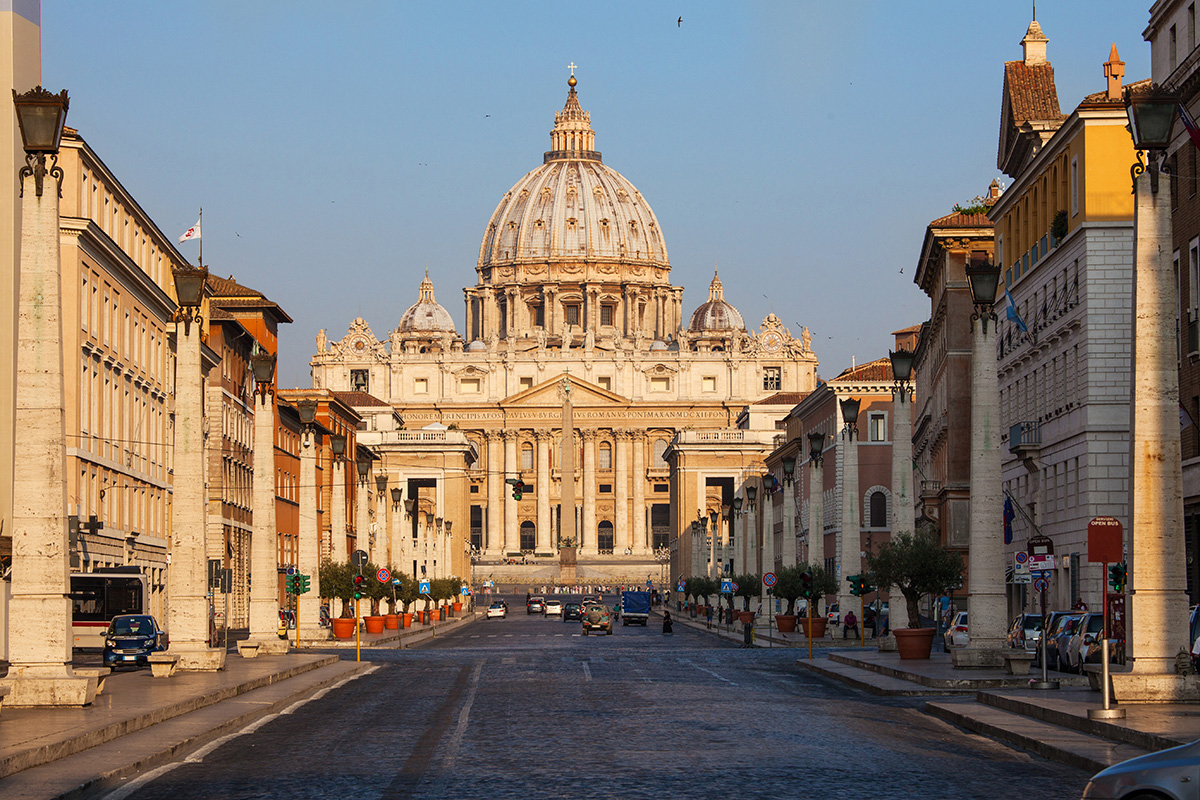
It’s not every day you meet a pope. Mine was Pope John Paul. In the recent passing of Pope Francis, and all the love and generosity of this ”People’s Pope,” I was reminded of a similar man, with a similar heart, who I had the fortune to one day meet.
There’s no real yardstick for measuring a man who’s the head of an institution that has been around since the Romans, who commands the respect of more than a billion people, and whose job it is to keep alive a 2,000-year-old message of love, hope, generosity, and salvation.
I wasn’t planning on meeting him. More like it was fated, or I’d like to believe that.
I was on a spiritual journey of my own. My schoolwork was over in Norway, and I was headed to Lebanon to write about the war there. I was a young man of 17, trying to figure out the world and how it worked — or didn’t.
It was a week before Easter when I found myself in Rome, standing at the far edge of St. Peter’s Square. As I remember, it was very early and a very beautiful morning, sometime around six or so. Even at that age, I found great solace in the solitude of the early morning. It’s as if I had the entire Square to myself, reflecting on this singular moment in time that I was alone in one of the greatest places of spiritual gathering in the world.
But I wasn’t alone. Next to the fountain where I had parked my backpack laid a man, curled up next to the stone wall, in the gentle universal snore of inebriation. I quietly cupped some water to wash my face and neck, which apparently was enough to stir the man from his sleep.
I nodded my head at him, smiled, and gave a short wave in the universal sign that we were all good and passing fellows. He groggily waved back. I was about to gather up my rucksack and head out when I saw a man strolling across the far side of the Square, about 100 yards away He was in no hurry, which intrigued me. Another soul in search of morning quietude, I thought to myself. He sauntered along, thoroughly enjoying the morning air, occasionally looking up at the sky, which was equally as intriguing.
He was a happy man who was happy to be alive. I thought it was remarkable that on that morning, there were two happy people in the world, and they were both in St. Peter’s Square.
As if a bee to a flower, the man took a direction to a small group of people, three or four more souls walking together who stopped as the man approached them. I saw one of them reach out for the man’s hand and then he kissed it. Now my curiosity turned to wonderment, trying to understand what was taking place.
My Roman fountain friend began a slow drunken babble to me as he gestured toward the small cluster that I was evidently staring at. His Italian was as good as my English, and that was the end of it. Though he continued to say, “Papa, Papa.” I queried him back, having no clue what his Papa was. Then he sat up as if to collect every ounce of clarity that still inhabited him and said, “Pope-a.” I pointed to the group. “The Pope?” He nodded his head and said, “Si. Il Pope-a” (which I later understood was a combination of the affectionate and respectful use of Papa for the Pope, combined with our English version — thus, “Pope-a”).
He smiled. I smiled. The apostle of the fountain had conveyed his message, and I was on my way to meet the pope.
Quickly, I made my way to the small gathering. I was a little unsure of how to add myself to the procession, as small as it was. My mind started to whirl with pope-laden imaginings. Would he be talking in Latin? Wearing silk robes? Would he be holding some relic of St. Peter’s golden staff?
I then slowed my walk, brought myself to the edge of the group, and there he was — the pope, John Paul himself. He was smaller than I had imagined. No staff or silk robes. He was chatting up the small group as if they were neighbors meeting in the middle of the sidewalk, exchanging news of the neighborhood or the latest sport’s scores, all in a breezy mixture of Italian and English.
He then spotted me and waved me over. I froze for a moment. With no time to study the Pope Manual of Papal Etiquettecy, I had no clue if I should kiss the ring or the hand, or shake it, or what? Not being Catholic, I was not versed on how to properly greet a pope.
I then did what any non-Catholic American 17-year-old kid on a spiritual journey would do: I combined a handshake with a nod/kiss on the hand and the biggest kid-smile I could muster. He smiled back, with the understanding of what it was to be a pope and meet a kid like me both in awe and in happiness at being together there on the Sunday morning in St. Peter’s Square.
He asked me a few questions for which I have no memory of my answers. It didn’t matter. I was talking with the pope.
There was no Instagram, or Facebook, or selfie-taking back then. Everyone somehow understood that this was a moment you stored in your mind and in your heart. To take pictures would have somehow sullied it, and everyone knew it.
John Paul was a man on a morning stroll, who shared his intimate time with a group of fellow morning seekers. He was warm, kind, and cordial — a prince of a fellow in my book. The type of man you could talk to in a bar, or on a train, or on a park bench. He practiced the generosity that is the best of the human spirit — to give without expecting anything in return. A gift of love that needs no bartering or transaction to fulfill it.
Lately, and with the recent passing of Pope Francis, I thought I needed to commemorate this memory of this day on paper. Watching how generous Pope Francis was with his love, to the children, to the sick and poor, to the downtrodden, to those who are so easily trampled over in the modern day haste to make civilization “better” and “faster,” it was no stretch to remember another man who so equally and mightily gave his heart and soul to others.
In a world where so many are seemingly trying to figure out who to hate and how to hate them, I find great solace in knowing that there are those who understand that the better angels of our nature are to be better.
On a beautiful Sunday morning, in the small tide of the oceans of history, I met with a man who helped me to remember once again that the Golden Rule is golden because it shines with goodness, grace, and generosity, and that is no small endeavor for all of us to journey toward in all of our lives.
Carew Papritz is the award-winning author of ‘The Legacy Letters’ who inspires kids to read through his ‘I Love to Read’ and ‘First-Ever Book Signing’ YouTube series.
Commentary
‘A New Alliance for a New Millenium, 2003-2020’
Revisiting the history of gay Pride in Washington
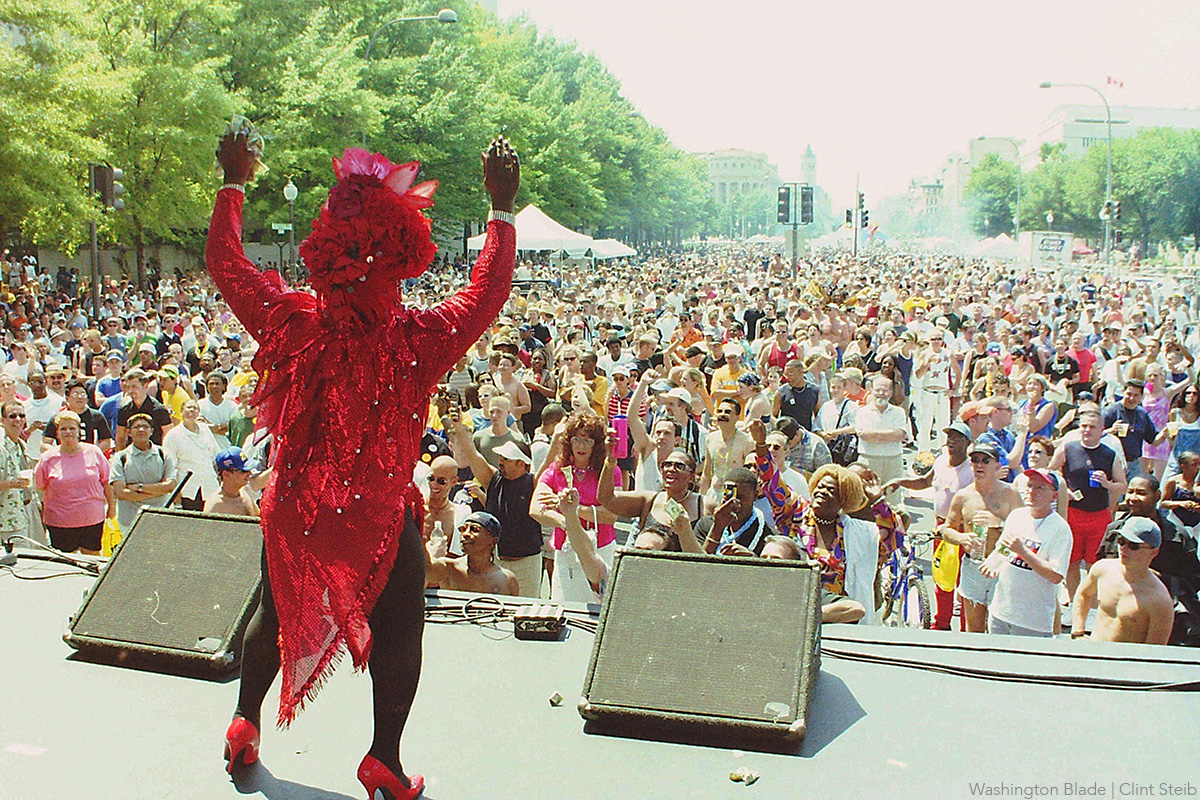
In conjunction with WorldPride 2025, the Rainbow History Project is creating an exhibit on the evolution of Pride: “Pickets, Protests, and Parades: The History of Gay Pride in Washington.” It will be on Freedom Plaza from May 17-July 7. This is the ninth in a series of 10 articles that share the research themes and invite public participation. In “A New Alliance for a New Millenium” we discuss how Whitman-Walker’s stewardship of Pride led to the creation of the Capital Pride Alliance and how the 1960s demands of the Mattachine Society of Washington were seen as major victories under the Obama administration.
This section of the exhibit explores how the Whitman-Walker Clinic, a cornerstone of the community since the 1970s, stepped up to rescue Pride from a serious financial crisis. The Clinic not only stabilized Pride but also helped it expand, guiding the festival through its 30th anniversary and cementing its role as a unifying force for the city’s LGBTQ population. As Whitman-Walker shifted its focus to primary healthcare, rebranding as Whitman-Walker Health, a new era began with the formation of the Capital Pride Alliance (CPA). Born from the volunteers and community partners who had kept Pride going, CPA took the reins and transformed Capital Pride into one of the largest free LGBTQ festivals in the country. Under CPA’s stewardship, the festival grew to attract hundreds of thousands, with multi-day celebrations, headline performers, and a vibrant parade.
This period saw Pride become a true cross-section of the community, as former Capital Pride Alliance executive director Dyana Mason recalled: “It was wonderfully diverse and had a true cross section of our community… Everybody was there and just being themselves.” The festival’s expansion created space for more people to find a sense of belonging and affirmation. This growth was made possible through the support of sponsors, volunteers, and a city eager to celebrate-but it also sparked ongoing debates about the role of corporate funding and the meaning of Pride in a changing world.
National politics are woven throughout this era. In a powerful moment of recognition, Frank Kameny — the architect of D.C.’s first White House picket for gay rights and a founder of the Mattachine Society — was invited to the White House in 2009. There, President Obama and the U.S. government formally apologized for Kameny’s firing from federal service in 1957, a symbolic act that echoed the earliest demands of DC’s own Mattachine Society, the city’s first gay civil rights organization founded in 1961. The 2009 National Equality March revived the spirit of earlier mass mobilizations, linking LGBTQ rights to broader movements for social justice. The 2010s brought landmark victories: “Don’t Ask, Don’t Tell” was repealed, marriage equality became law. These wins suggested decades of protest had borne fruit, yet new generations continued to debate the meaning of true liberation and inclusion.
Our exhibit examines how the political edge of Pride has softened as the event has grown. As the festival expanded in scale and visibility, the focus on protest and activism has sometimes faded into the background, even as new challenges and divisions have emerged. Some voices have called for a return to Pride’s more radical roots. The 2017 Equality March for Unity and Pride drew 80,000 people to D.C., centering intersectional struggles — police violence, immigrant rights, trans inclusion — and exposing the widening rift between mainstream LGBTQ progress and the lived realities of the most vulnerable. The question remains: Are LGBTQ officers marching in uniform a sign of progress or a painful reminder of Pride’s roots in resistance to state violence? During Capital Pride 2017, activists blocked the parade, targeting floats sponsored by corporations linked to weapons manufacturing, pipeline financing, and other forms of oppression.
As we prepare for WorldPride and the anniversaries of D.C.’s first Gay Pride Day Block Party and the White House picket, the Rainbow History Project invites you to experience this living history at Freedom Plaza. Through archival images and the voices of organizers and participants, you’ll discover how Pride in DC has been shaped by resilience, reinvention, and the ongoing struggle to ensure every voice is heard.
Zoey O’Donnell is a member of the Rainbow History Project. Vincent Slatt is RHP’s senior curator.
Opinions
Council must approve new Commanders stadium deal
An important catalyst for economic development
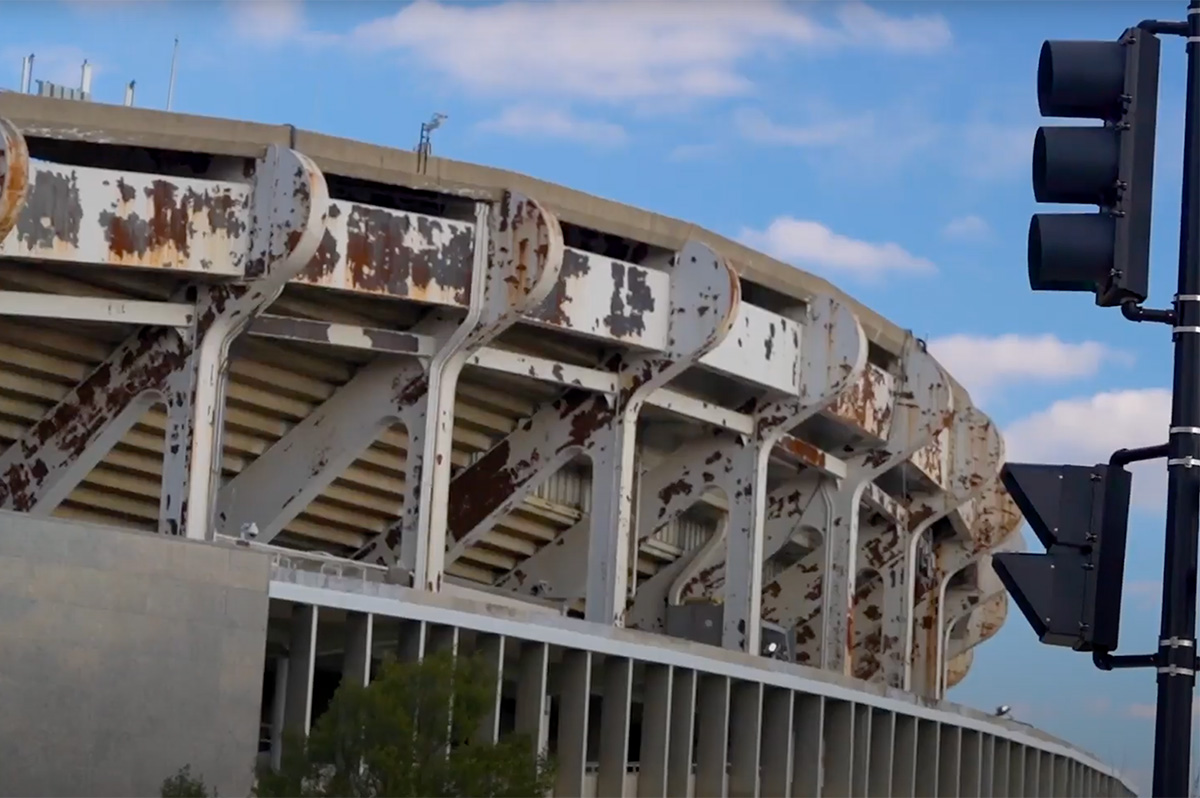
I am a strong supporter of the Commanders stadium deal at the RFK site. The Council members who understand economic development will vote “yes.”
Chairman Phil Mendelson, and some of the others, are smart. Despite the chair being peeved he wasn’t in on the negotiation, he will have some good ideas to tweak the deal, and will then get the seven members of the Council needed to pass it. While the deadline is July 15, there is a paragraph in the agreement reading it can be extended if both sides agree. Again, Mendelson is a smart guy. He will not pass up this incredible opportunity. Besides that, he recognizes it could happen without the Council if the president and Congress want it. It was NFL Commissioner Roger Goodell, and Commanders owner Josh Harris, who worked with the mayor, lobbying hard to get us the 180-acre site. Chances are, without their help, we wouldn’t have it. So, the deal will move forward, as it should, based on its merits.
The domed stadium proposed by the Washington Commanders for the 180-acre RFK site is only one part of the planned incredible economic development opportunity Mayor Muriel Bowser has negotiated. This was a dream of the mayor for 10 years, and she worked with Congress to get the site turned over to the District. This finally happened last year when Congress passed the D.C. Robert F. Kennedy Memorial Stadium Campus Revitalization Act. The legislation was signed into law by President Biden in January 2025. It gave the District the ability to develop the long-underutilized space for a mix of uses, lifting the restrictions that were in place under the previous lease. The legislation requires 30% of the RFK campus be reserved for parks and open space, not including a 32-acre riparian area along the Anacostia River.
Since the legislation was signed, the mayor worked closely with Josh Harris, principal owner of the Commanders, to negotiate the single largest private investment in the District’s history — a $2.7 billion investment from the Commanders. The mayor understands this investment will be the catalyst to activate 180 acres of what she has called ‘opportunity’ at the RFK campus. It is not only a sparkling new domed stadium. That will complement the transformation of the entire campus to include housing, parks and recreation, hotels, restaurants, retail, and neighborhood amenities.
The mayor understands the economy of D.C. is changing. Between the pandemic, and now reduction in federal workforce, the city has to change how we generate revenue. As the mayor said, “When we got control of 180 acres of land on the banks of the Anacostia, we knew right away that partnering with the Commanders would be the fastest, and surest, route to bringing the entire RFK campus to life. As we focus on the growth of our economy, we’re not only bringing our team home, but we’re also bringing new jobs and new revenue to our city, and to Ward 7.” We have seen what Nationals’ stadium did as the catalyst for that part of D.C. Remembering the fights over that stadium, and the fact the city, not the team, paid for it, we know it moved forward profitable development of the entire area by a minimum of 10 years.
Yes, it may be possible to redevelop this 180-acre site without a stadium; but it’s also clear it would take at a minimum at least 10 years longer, if ever, to do it without the Commanders investment. Under the terms of the deal, the Commanders will drive the investment of at least $2.7 billion to build a roofed stadium that can be used year-round, together with related improvements. The District will invest $500 million for stadium horizontal and non-vertical costs, paid for from the Sports Facilities Fee (formerly known as the Ballpark Fee). By leveraging dedicated funds from the Sports Facilities Fee, the District will not need to make cuts to the city’s operating budget. In addition, the District will facilitate parking development using a $175 million revenue bond, which will be funded by in-stadium activity once the stadium is operating. Events DC will contribute up to $181 million for parking garages near the community recreation facilities, which Events DC will own. Additionally, similar to other large development projects such as St. Elizabeths East, the District will invest $202 million for utilities infrastructure, roadways, and a WMATA transit study. The study will determine if at some time there might be new bus routes, or even an additional Metro stop. Let us remember there was a stadium there before and the RFK campus is today readily accessible by many public transit options.
The approximately 65,000-seat stadium, expected to open in 2030, will occupy only 11% of the site. In addition to building the stadium, the Commanders will be responsible for activating and developing multiple parcels of land around the stadium. Those will include restaurants, entertainment venues, hotels, housing, green space, and more. The entire campus is expected to create approximately 5,000-6,000 housing units, of which at least 30% being affordable housing.
Throughout the construction process, the District will seek to preserve and continue to operate the popular Fields at RFK. The District will invest an additional $89 million to build a new sportsplex to host year-round sporting events and tournaments for youth in D.C. The mayor’s Fiscal Year 2026 budget proposal will include $89 million for the sportsplex. Adjacent to the fields, park space, and sportsplex, the District will develop a new Kingman Park District, which will include housing, mixed-use development, open space, and recreational space. To do this, the campus planning effort, will be taking all the development parcels through the D.C. 2050 Comprehensive Plan update. In this way, community members and neighbors will have an opportunity to weigh in on what types of uses would best serve the community. All parcels in the Kingman Park District will go through the District’s RFP process and prioritize local businesses.
As the economy of the District changes, the mayor and Council must be
focused on responding to the shifts. Activation of the RFK campus through this deal is expected to create approximately 14,000 jobs in connection to the stadium construction alone, and 2,000 permanent jobs. The stadium and surrounding development are anticipated to create approximately $4 billion in total tax revenue, and yield more than $15.6 billion in direct spending over 30 years.
The District has a successful history of using catalytic sports investments to transform underutilized spaces into vibrant neighborhoods, including in Chinatown-Gallery Place with Capital One Arena (originally the MCI Center); Capitol Riverfront with Nationals Park; and St. Elizabeths East with the CareFirst Arena (originally the Entertainment and Sports Arena) in the past decade. During her time in elected office, the mayor has worked on successful deals for Audi Field, the CareFirst Arena, the renovation of Capital One Arena, and now this partnership with the Washington Commanders.
Again, Mendelson will have some good ideas that he will want to negotiate into the agreement as it moves through the Council. But the overall positive impact of this deal on the District’s economy will win the day. He, and many Council members, understand major sports are a significant driver of the District’s new economy, generating $5 billion in 2022 and attracting 7.4 million visitors in 2023. The fact is D.C.’s sports teams and their facilities have boosted neighborhood investment, with nearby commercial development outpacing the rest of the city, after each facility opened.
This is a once-in-a-lifetime deal for D.C. I urge everyone to contact your Council member, and tell them to vote yes.
Peter Rosenstein is a longtime LGBTQ rights and Democratic Party activist.
-
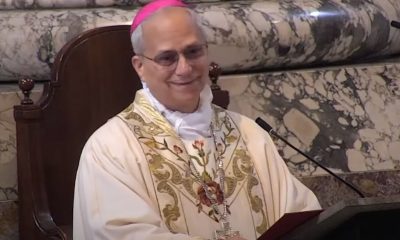
 The Vatican3 days ago
The Vatican3 days agoAmerican cardinal chosen as next pope
-
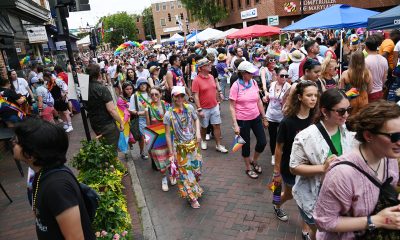
 a&e features3 days ago
a&e features3 days agoYour guide to the many Pride celebrations in D.C. region
-
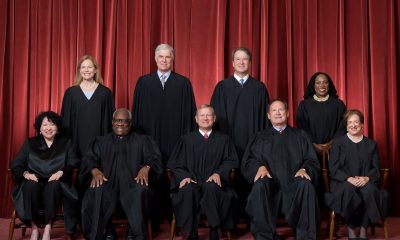
 U.S. Supreme Court4 days ago
U.S. Supreme Court4 days agoSupreme Court allows Trump admin to enforce trans military ban
-
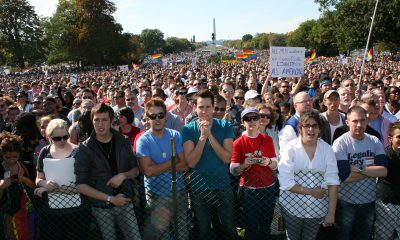
 District of Columbia4 days ago
District of Columbia4 days agoWorldPride permits for National Mall have yet to be approved

